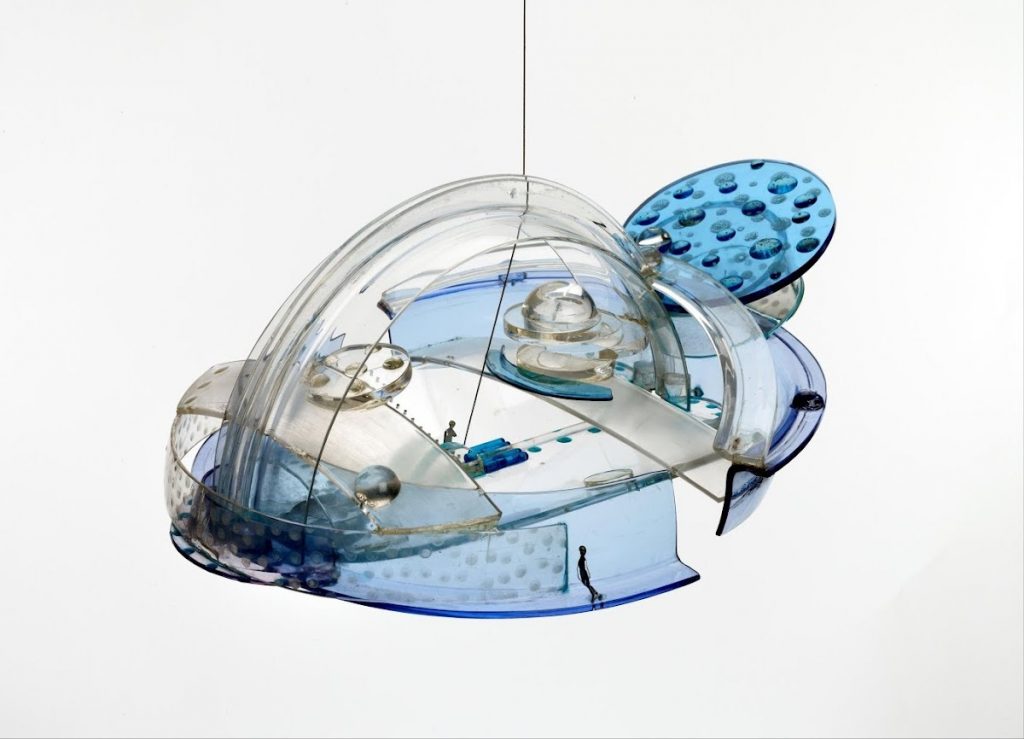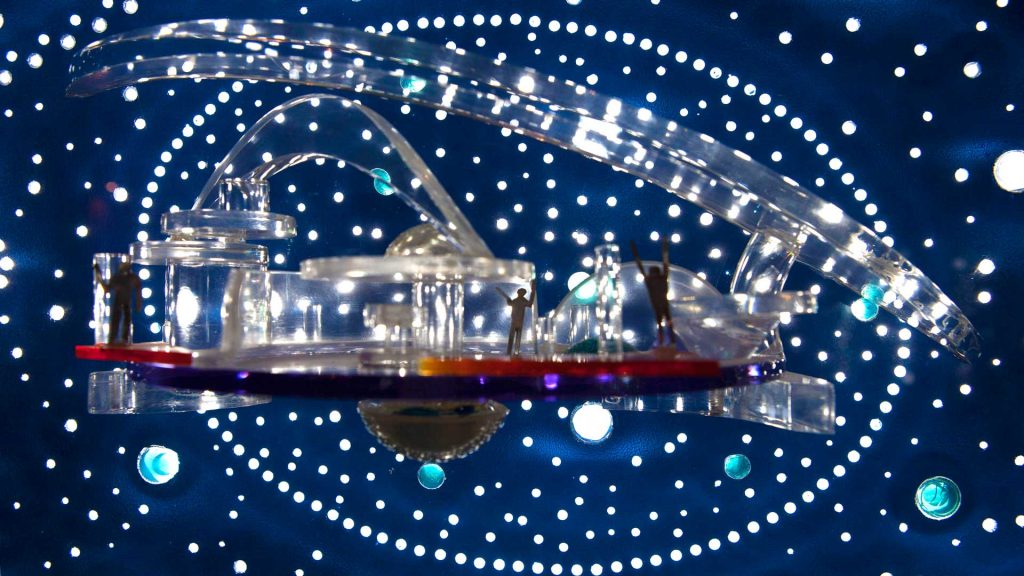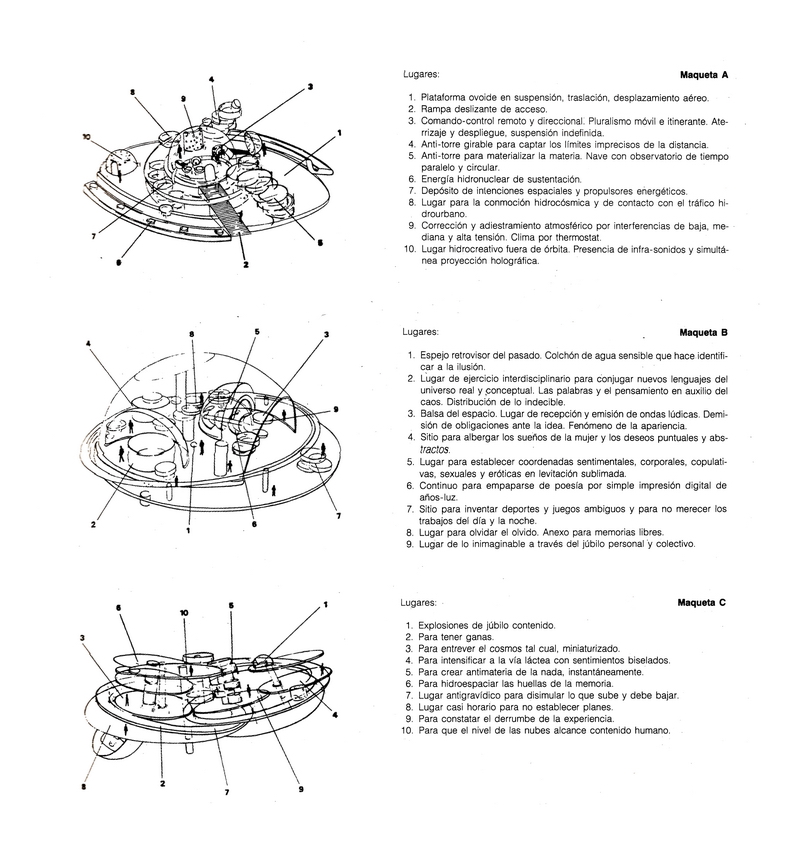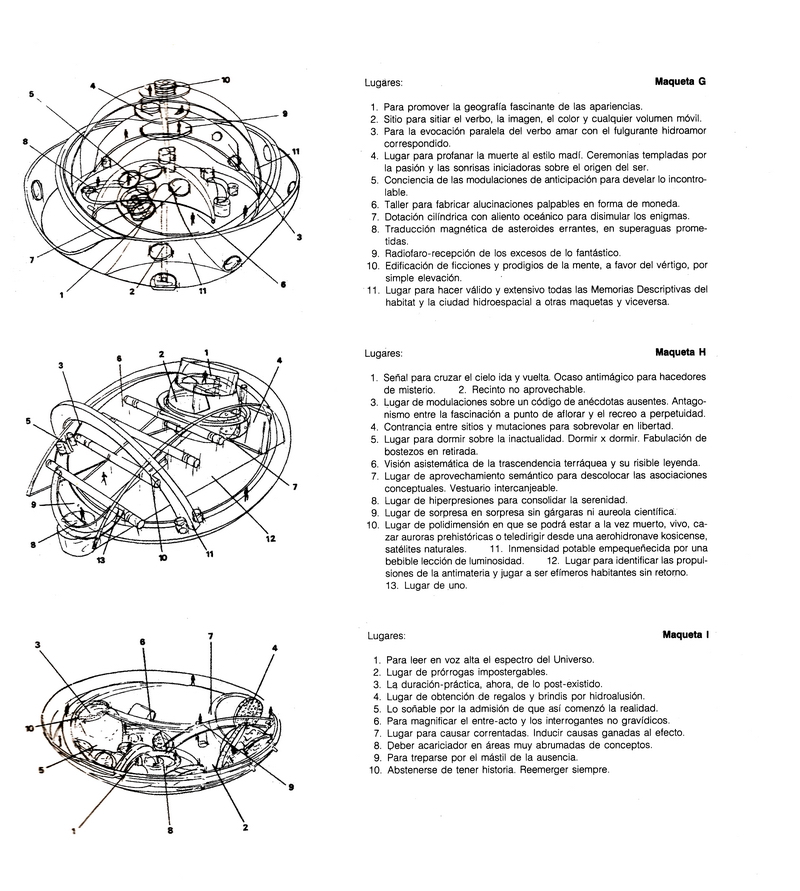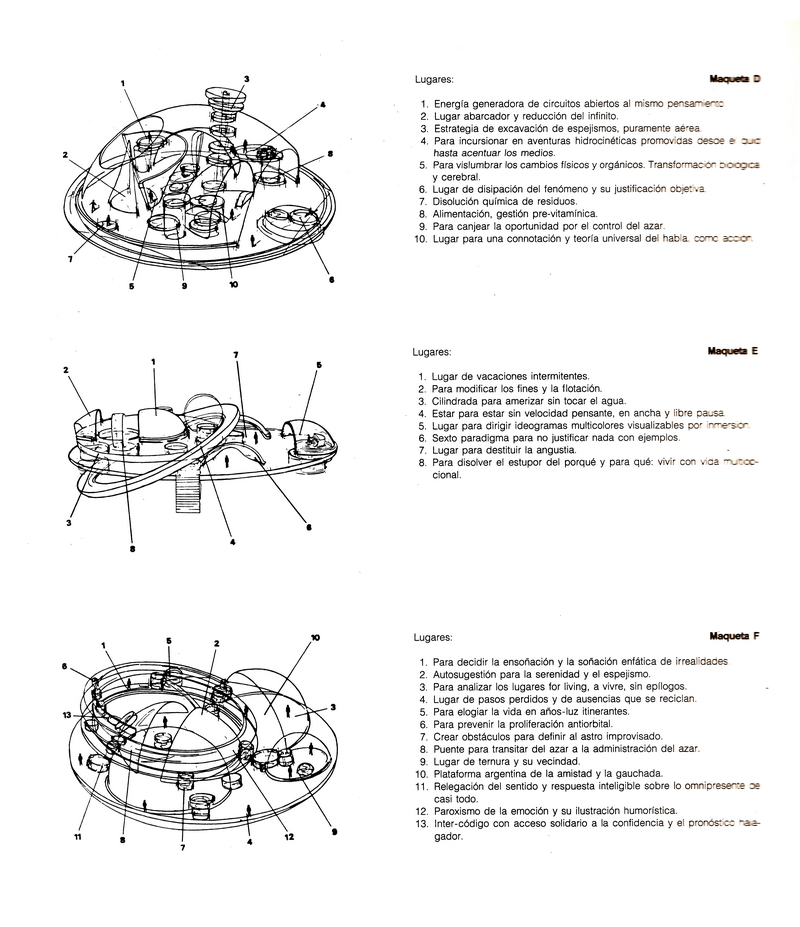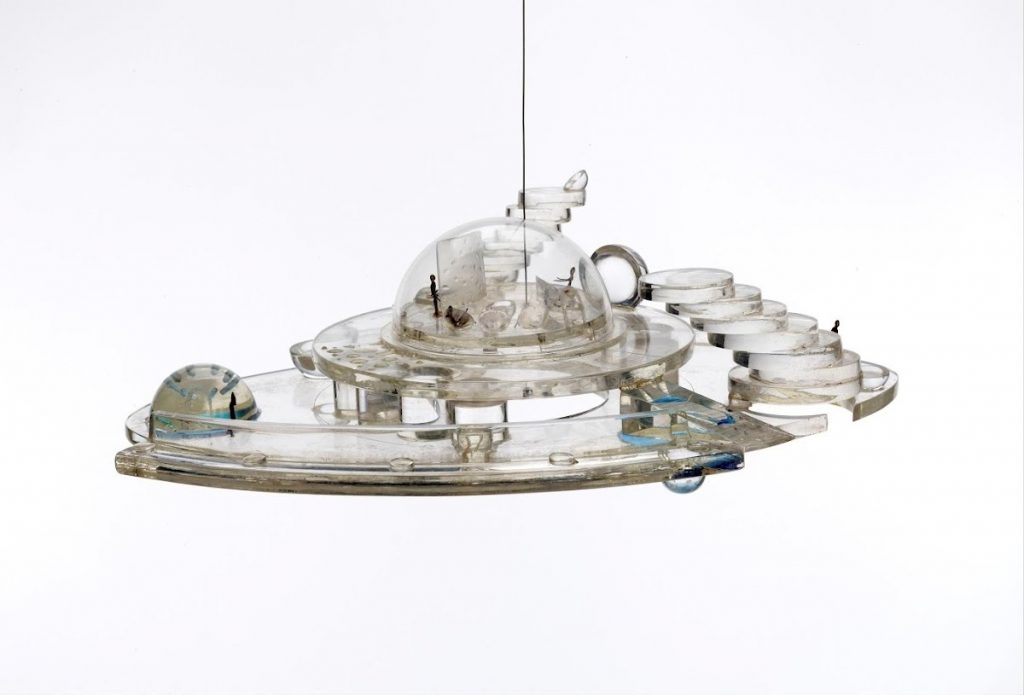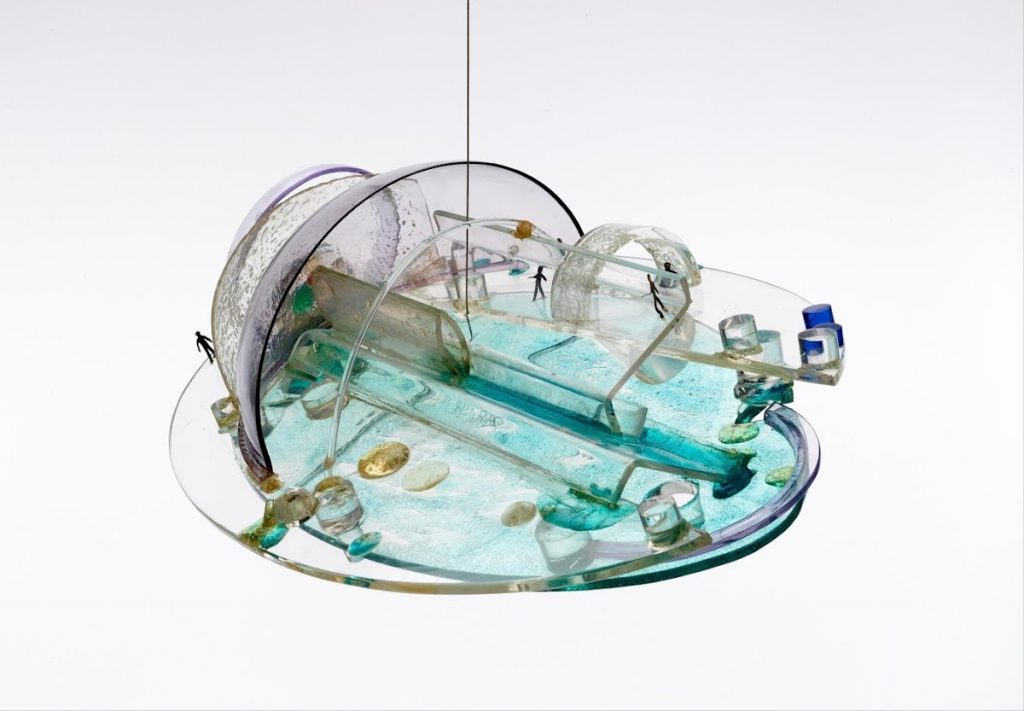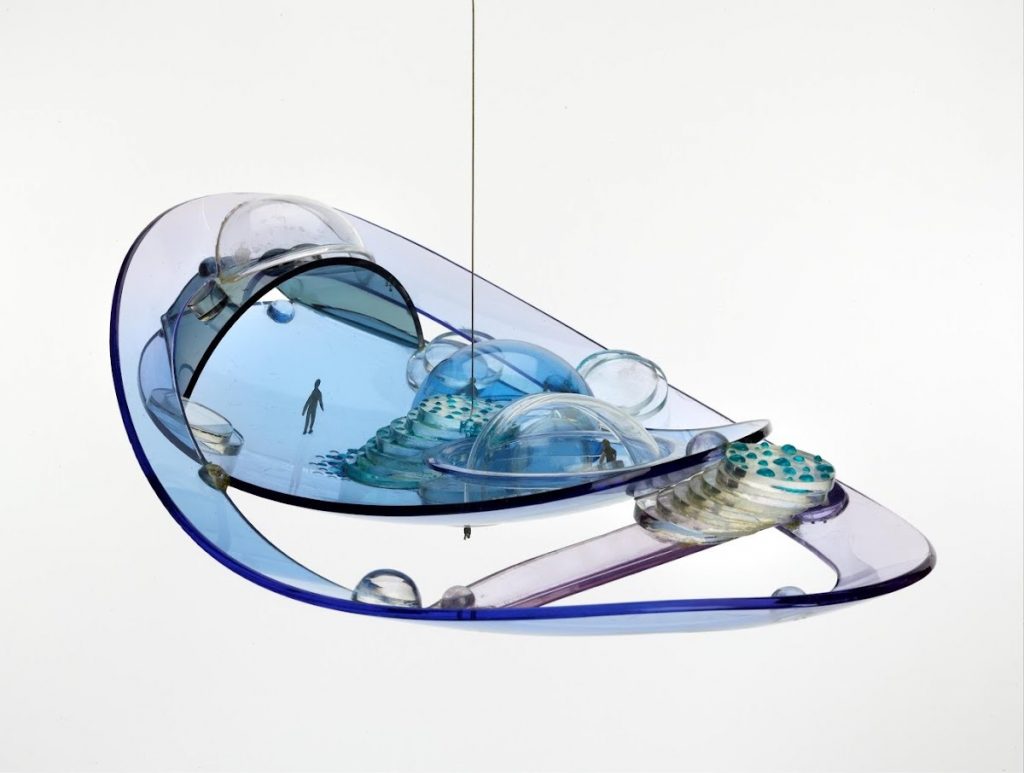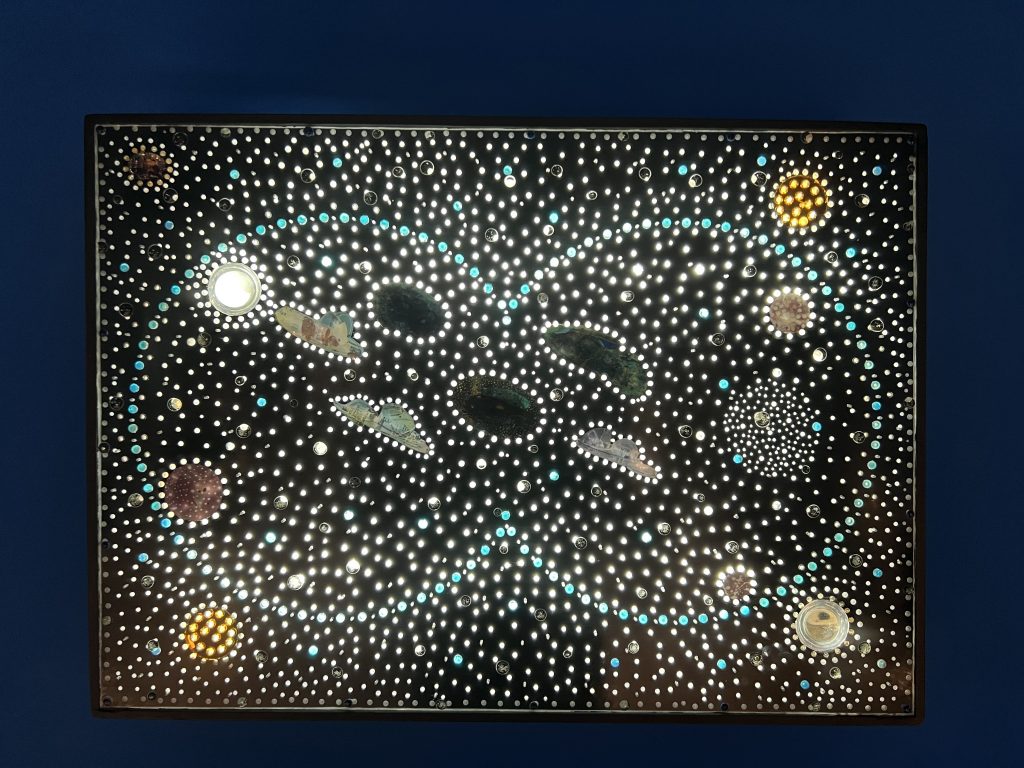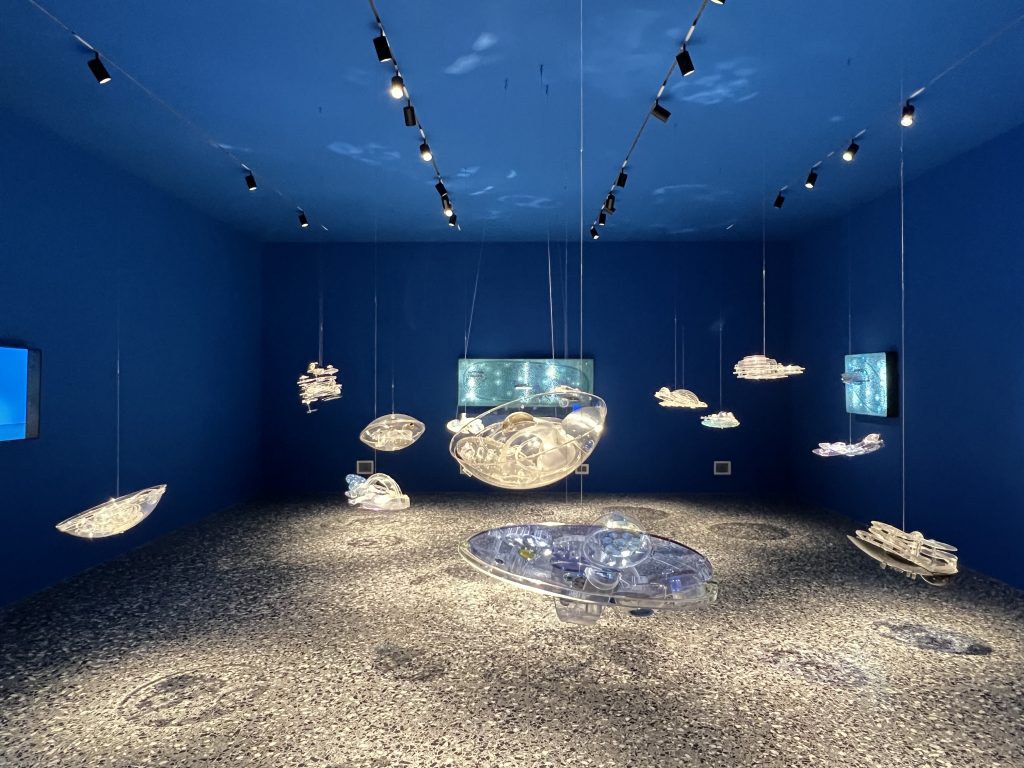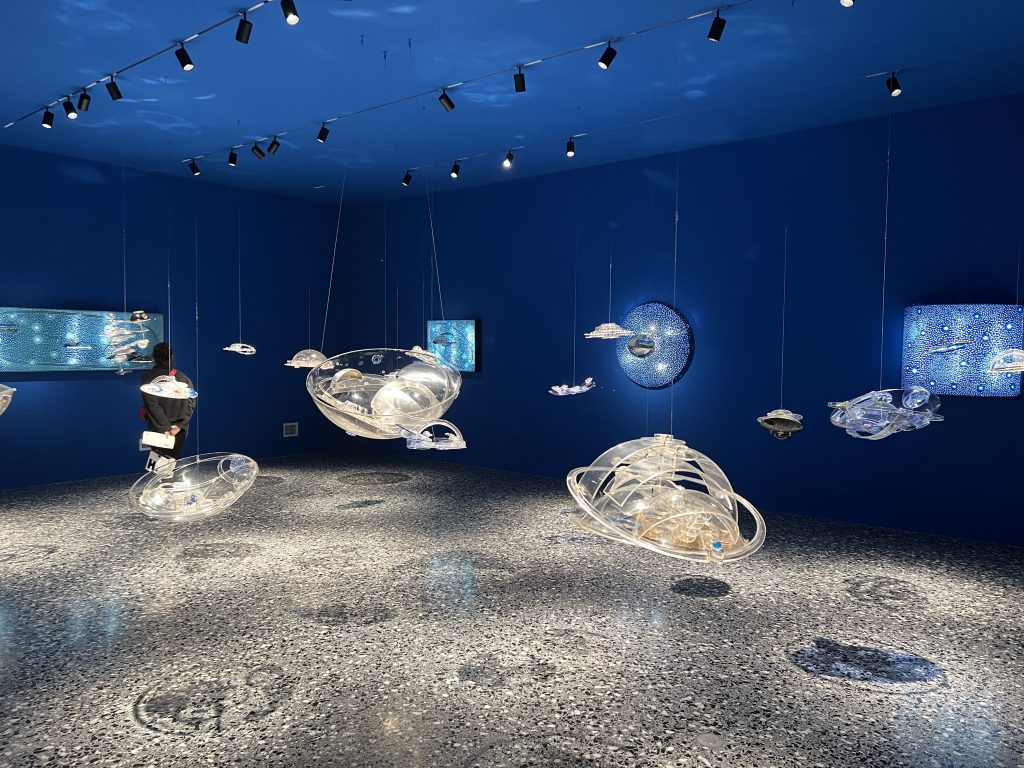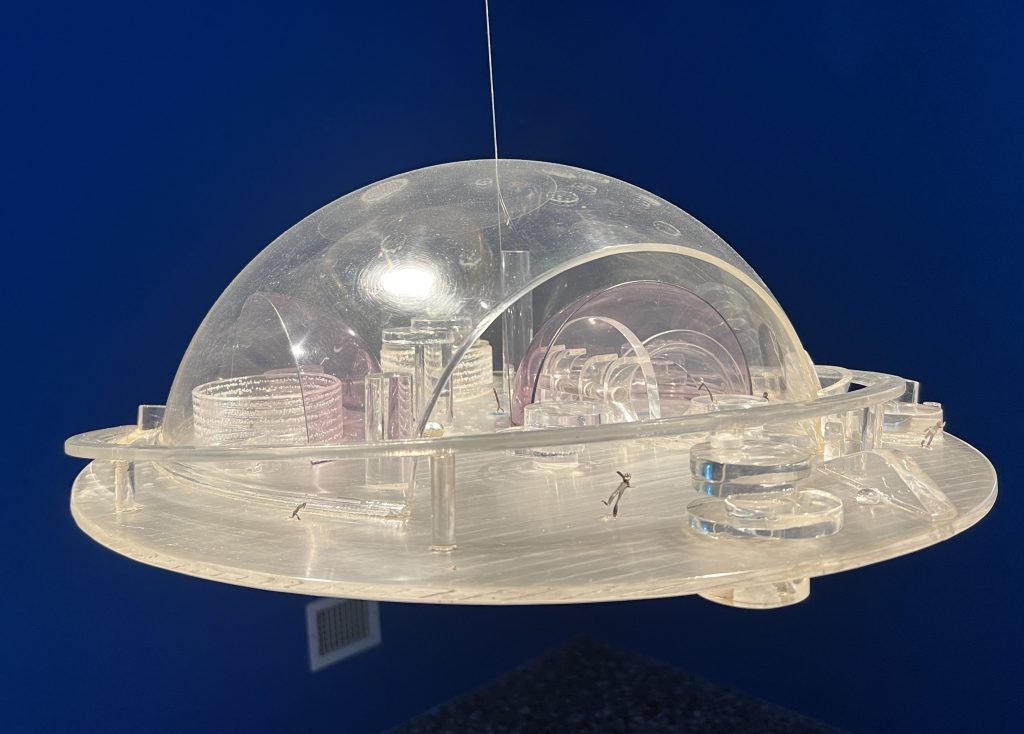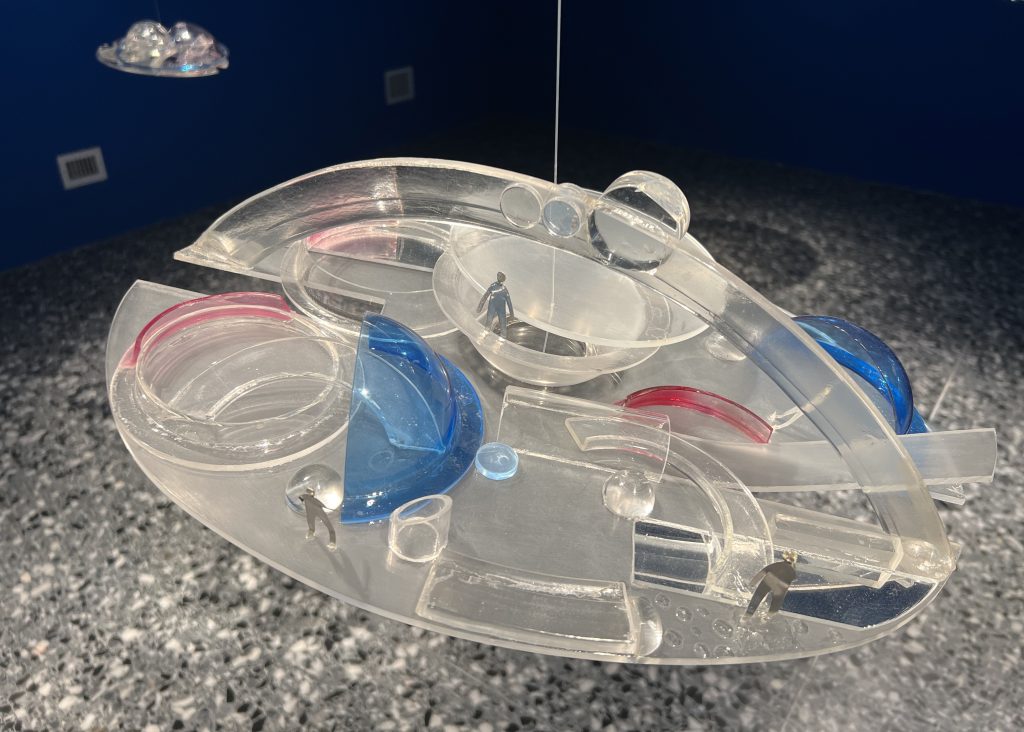Text by Museum of Fine Arts
Gyula Kosice’s La Ciudad hidroespacial –a utopian vision for architecture in space- is the Argentinean master’s most ambitious project. The installation combines his critiques of modern functionalist architecture and the human destruction of the environment with his interest in science, technology, and the use of non-traditional materials such as Plexiglas and light. Writing in 1944 that “MAN WILL NOT END HIS DAYS ON EARTH,” Kosice argued that Western architecture reinforced class divisions, socioeconomic inequality, and environmental degradation, which were compounded by astronomical population growth. As an alternative, he proposed a city of semi-open, modular habitats suspended 5000 feet above the ground and powered by oxygen and hydrogen harnessed from water vapor in the clouds.
Visión utópica de arquitectura en el espacio, La ciudad hidroespacial de Gyula Kosice implica el proyecto más ambicioso del maestro argentino. La instalación combina el uso de materiales no convencionales (plexiglas y luz) y su interés en la ciencia y la tecnología con críticas al funcionalismo arquitectónico moderno, así como al deterioro ambiental humano. En 1944, escribió que “EL HOMBRE NO TERMINARA SUS DÍAS EN LA TIERRA”, arguyendo que la arquitectura occidental incentiva la lucha de clases, la desigualdad socioeconómica y la degradación ambiental aunadas al astronómico crecimiento poblacional. Como alternativa propuso una ciudad semiabierta con hábitats modulares a 5000 pies sobre la Tierra movilizados por hidrógeno y oxígeno sacados del vapor de agua de las nubes.
La Ciudad hidroespacial challenges notions of borders and private property, instead favoring the unrestricted movement of people in an environmentally sound space. The habitats could be moved to any location around the globe and connected to one another. Promoting communal living, Kosice replaced the conventional separation of homes into rooms determined by use (kitchen, living room, bedroom, bathroom). Moreover, he envisioned a new form of existence, where daily life, poetry, play, and art would be indistinguishable. Erasing distinctions between work and leisure, the 19 habitats stimulate the playful, emotional, and psychological dimensions of human existence. Convinced that hydrogen fusion could provide the energy necessary to launch his city into space, Kosice approached NASA and various astrophysicists about the project’s feasibility, which they deemed theoretically viable but too costly and onerous to produce.
La ciudad hidroespacial desafía nociones de frontera y propiedad privada favoreciendo el desplazamiento irrestricto de gente en un espacio ambiental limpio. Tales hábitats podrían ser vinculados entre sí y desplazarse hacia cualquier parte del mundo. Promotor de vida comunal, Kosice sustituye la división convencional del hogar en espacios determinados por uso (cocina, sala, dormitorios, baño); incluso, vislumbró una nueva forma de existencia, donde lo cotidiano, el arte, la poesía y el juego fueran lo mismo. Al borrar distinciones entre trabajo y ocio, los 19 hábitats incentivan una dimensión de la existencia humana, lúdica, emocional y psicológica. Convencido de que la fusión de hidrógeno suministraría energía suficiente para lanzar esta ciudad al espacio, Kosice contactó a la NASA y algunos astrofísicos para ver la factibilidad del proyecto: fue considerado viable, teóricamente, aunque de producción demasiado costosa.
